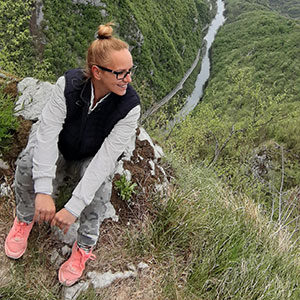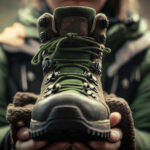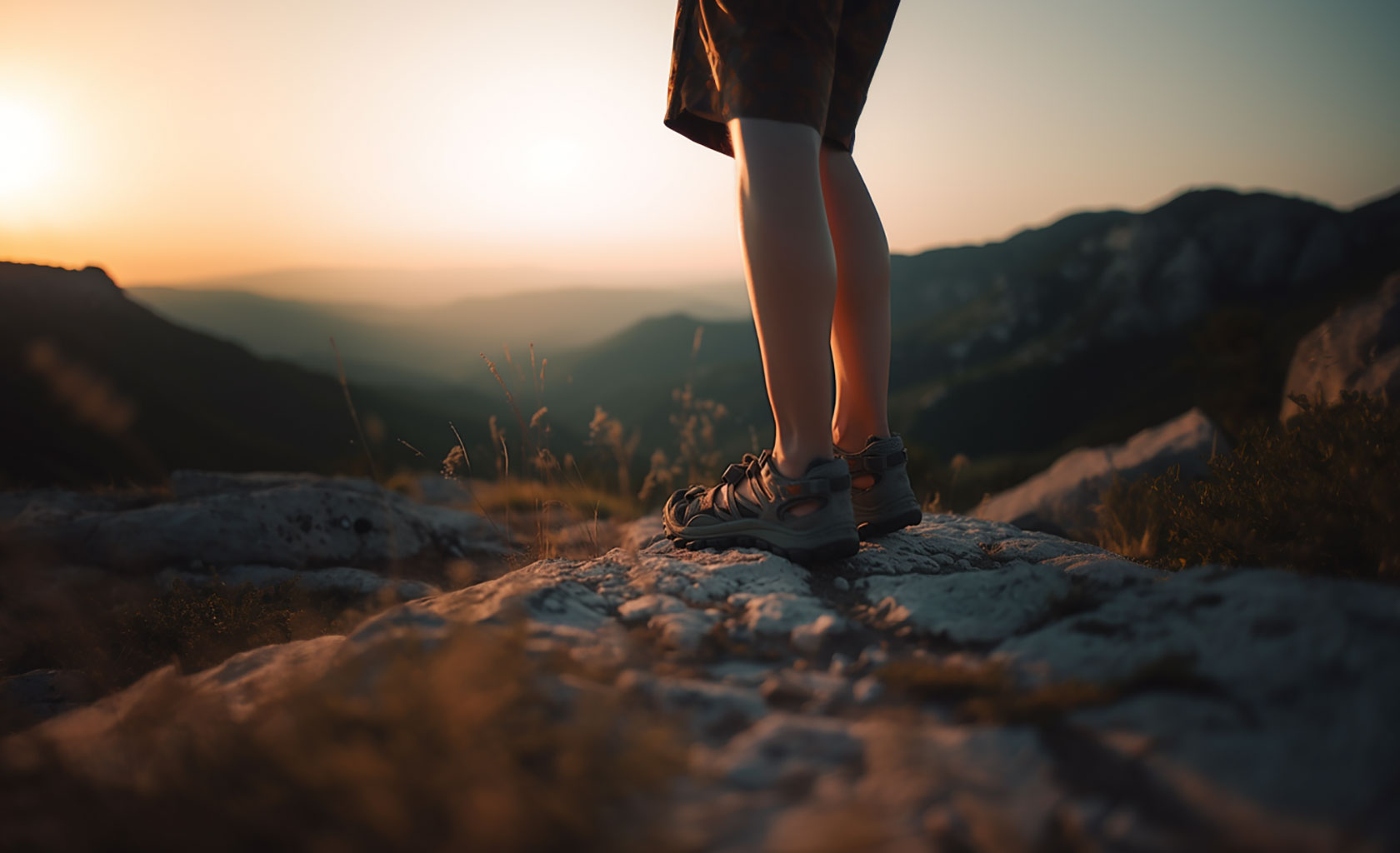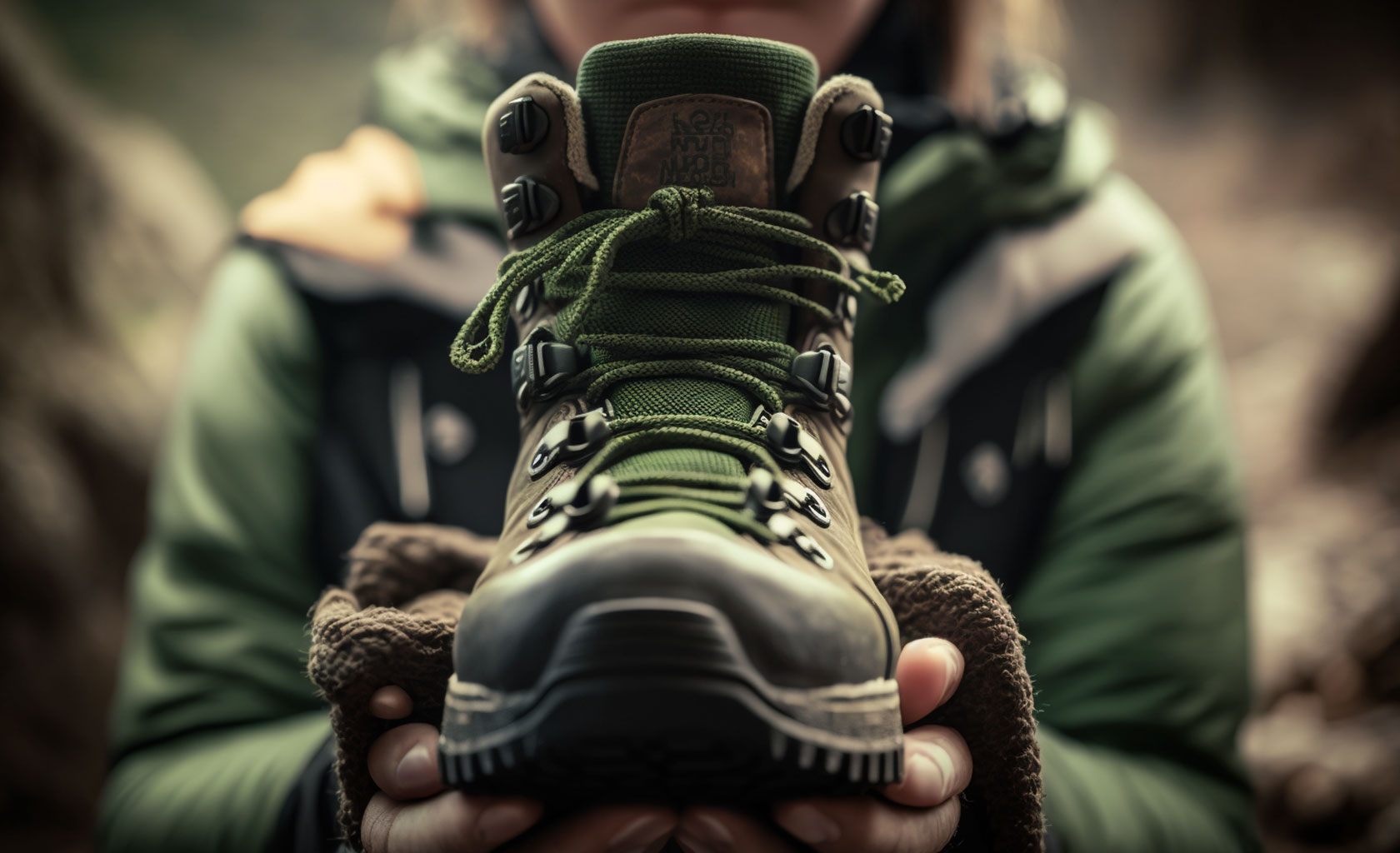ARE THE BEST HIKING SHOES ACTUALLY SHOES OR?
It might seem strange, but it is not easy to define what a hiking shoe is, let alone which ones are the best. Basically, a hiking shoe is a mid-cut shoe designed for hiking that weighs less than a hiking boot but more than a trail runner. What is the problem with this definition? The problem is that difference between hiking shoes and trail runners has begun to disappear. The reason for this is a combination of two factors:
- The need for this type of shoes has never been higher
- Hikers tend to choose lighter hiking footwear more often
According to Hiking Footwear Market Analysis and Forecast 2021-2031, it is expected that the value of footwear sales in the US will reach 25 billion dollars in 2031 which represents a 7 billion dollars increase compared to 2020. This means that the need for comfortable, safe and light hiking shoes has never been higher. The manufacturers recognized the trend, adapted to the requirements of the market and made famously comfortable trail runners more robust.
This is to say that our list of Best Hiking Shoes will also contain trail runners which more than certainly deserve to be among the best.
QUICK PEEK
For all of you who do not have time or do not want to go into details, here is a brief review of the best of this category in 2023.
- Best hiking shoes overall: Salomon X Ultra 4 GTX
- The toughest among the best: La Sportiva Spire GTX
- Best low-budget hiking shoes: Merrell Moab 3
- Best ultra-light hiking shoes: Hoka One One Speedgoat 5
- Favorite for wide feet: Keen Targhee III WP
It is important to mention that all shoes listed above are available for men and women. This is because gender does have a saying in the production of hiking shoes too. Men and women are different and they need different shoes. For more details supporting this claim read our text Hiking Shoes for Women- Does Gender Always Matter and find a slightly more gender-oriented list in Best Hiking Shoes for Women in 2023.
1. SALOMON X ULTRA 4 GTX - BEST HIKING SHOES OVERALL
Pros: Lightweight and durable, excellent traction, stable and breathable
Cons: New lacing system and updated fit are not everyone’s first choice
If you’re looking for a hiking shoe that offers the perfect balance of durability and weight, then the Salomon X Ultra 4 GTX is the shoe for you. With a design that is reminiscent of a traditional shoe, these hiking shoes fit like trail runners, giving you a nimble and agile feel on the trail. You won’t have to worry about a long break-in period with these shoes, as they require very little time to feel comfortable on your feet.
One of the standout features of the X Ultra 4 GTX is the traction that these shoes provide. They offer excellent grip on even the most challenging terrain, making them the best hiking shoes for backpacking or day hikes where you’ll encounter various types of ground. In addition, these shoes are also breathable and stable, keeping your feet comfortable and supported on long hikes.
While the Quicklace system may take some getting used to, it’s a minor inconvenience in an otherwise outstanding shoe. Once you’re accustomed to the lacing system, you’ll appreciate the convenience and ease of use that it provides.
In conclusion, the Salomon X Ultra 4 GTX hiking shoes are an exceptional choice for hikers who want a shoe that is lightweight, durable, and high-performing. With a sleek and modern design, these best hiking shoes offer a fantastic mix of agility, support, and protection that will take your hiking adventures to the next level
2. LA SPORTIVA SPIRE GTX – THE TOUGHEST AMONG THE BEST
Pros: Top mix of grip and comfort
Cons: Price and weight
The first word to describe these hiking shoes is capable. This is to say that their overall performance is beyond any reproach. They simply work astonishingly well on all terrains. La Sportiva Spire GTX are a top-notch combination of grip and comfort. Unlike their competitors, however, they do not have that feathery look. Instead, they look stiff and sturdy. This does not mean these shoes are not comfortable. On the contrary, comfort is provided but not at the expense of safety these hard-working shoes provide. What hikers love most about them is probably the thick midsole that guarantees great protection against stones and rocks. They also work well in water, snow and on ice. So, all in all, put these shoes on and fear nothing.
Two things worth mentioning are reasons why these marvelous hiking shoes are in the second place on our Best Hiking Shoes list. First is the price. These shoes are the most expensive on our list. They cost approximately 50 dollars more than their competitors. The second is the fact that they are slightly heavier than the competition. Their Italian manufacturers even call them low-cut hiking boots so no wonder they weigh more than other shoes on our list. So, if you do not mind carrying some extra weight and paying some extra money, we highly recommend the powerful La Sportiva Spire GTX.

3. MERRELL MOAB 3– BEST HIKING SHOE FOR THE BUDGET
Pros: An almost instant comfort, great value for the money
Cons: No perfect for technical terrain
Merrell is one of the top sellers in the world of hiking footwear and Moab 3 is their flagship model. Rest assured that the popularity of these shoes is not undeserved.
This shoe has gained popularity due to its lightweight feel, substantially cushioned fit, excellent durability, and affordable price. The recent update by Merrell has incorporated recycled materials, a new insole, and slight improvements to cushioning and traction, while the basic popular formula remained unchanged.
While this shoe may not be the best choice for technical terrain, it is a great option for day hikers sticking to established trails. The Merrell Moab 3 is breathable, requires little break-in, and has good traction. Additionally, it is one of the more durable hiking shoes available at its price point.
Also, compared to some other hiking shoes, the Merrell Moab 3 is slightly heavier, which may not make them the best hiking shoes for those seeking a lighter option. However, the weight of the Moab 3 is a reasonable tradeoff for its durability and comfort. For all these reasons we recommend them to weekend warriors and day hikers who want a reliable shoe that can handle established trails.
4. HOKA ONE ONE SPEEDGOAT 5 – THE LIGHTEST OF THE BEST HIKING SHOES
Pros: Low weight, extra cushioning
Cons: Wear out easily, slightly unstable due to cushioning
Hoka One One Speedgoat 5 are actually trail runners. As an outstanding example of its kind, these shoes are light and offer truly remarkable cushioning. Steps in these shoes will be light and fully absorbed by the midsole. Despite the overall softness, Hoka One One Speedgoat 5 still behave much better on a hike than other trail runners. They do not flatten as quickly as others of the type. So, if comfort is on top of your priority list and you prefer the lightness of step above all other qualities hiking shoes should provide, read no more but go shopping. Apart from the comfort, you will also get an excellent grip.
Being trail runners is what brings these shoes both good and bad reputation in hiking. Hoka One One Speedgoat 5 offer almost unbelievable comfort and cushioning but lack in stability and protection of the foot. This becomes visible once you wear them on an uneven surface or a rougher trail. They also wear out more easily than regular hiking shoes. Above all, the new model also gave up on overlayers at the upper part. This means less protection compared to the Speadgoat 4.
Nevertheless, these trail runners belong to the list of Best Hiking Shoes because, at the moment, no trail runner has made it so close to a typical hiking shoe. We highly recommend them for even trails and fast hikers.
5. KEEN TARGHEE III WP – BEST HIKING SHOES FOR WIDE FEET
Pros: Spacious toe box, secure lacing, stable design
Cons: Slightly heavy, may feel rigid
The KEEN Targhee III WPs have won the hearts of hikers with wider feet thanks to their reliable performance and high-quality construction. These leather hiking shoes may need a longer break-in period than lighter options, but they’re built to last and offer excellent comfort on the trail.
One of the best features of the Targhee III shoes is the elastic strap that links the lacing system to the heel counter, which adds to their stable feel and helps ensure a secure fit. Another bonus is the generous toe box, which provides extra room and comfort for wider feet.
Although these shoes are not as breathable or quick-drying as some alternatives, and their weight may make them less nimble on the trail, they excel at durability. We recommend them as the best hiking shoes for shorter hikes or for those wide-footed ones looking for a reliable and comfortable shoe for daily wear and overnight backpacking trips.
COMPARISON TABLE
Being aware that money is a concern, we decided to align our selection of the best hiking shoes according to their price. Following columns give info on weight, position on our list and reason for our rating.
| Name | Price | Weight | Our rating | Reason |
| Merrell Moab 3 | 110 $ | 2 lb 1 oz | 3 | Heavy but affordable, comfortable and durable. |
| Hoka One One Speedgoat 5 | 155 $ | 1 lb 4.6 oz | 4 | More durability would definitely get them a higher ranking. |
| Salomon X Ultra 4 GTX | 160 $ | 1 lb 11.5 oz | 1 | The best existing mix of all hiking shoes must-have qualities. |
| Keen Targhee III WP | 165 $ | 2 lb 5.7 oz | 5 | Refusing to cut their weight but still performing great. |
| La Sportiva Spire GTX | 210 $ | 1 lb 15 oz | 2 | Money really adds value here. We love them despite the price. |
BUYER’S GUIDE - THINGS TO CONSIDER WHEN BUYING HIKING SHOES
The whole purpose of this text is to help you find the best hiking shoes for you. Our top choices above, a brief review of their features and a comparison table may be sufficient for some of you. Some of you, however, prefer going beyond the list and having more detailed knowledge of what to look for. Hence the breakdown below. Consider it a buyers’ guide or a list of things to consider when buying hiking shoes.
Weight
The weight of your hiking shoes is important. It might not seem so when you first try them on but taking 10 steps on a shiny floor in a store is nothing like taking hundreds of thousands of them over rocks and roots in a forest. For this reason, the basic categorization of hiking footwear revolves precisely around weight. In terms of hiking shoes only, we have 2 weight categories – typical hiking shoes and trail runners.
Typical hiking shoes
Typical hiking shoes are a lighter version of hiking boots. They weigh less, have a lower cut and secure comparable traction but often lag behind in ankle support, stability and the overall protection they provide. This is to say that hikers have long ago started trading protection for the lightness of foot. The trend continued leading to increased use of trail runners in hiking and their consequential adaptation to hiking as a sport.
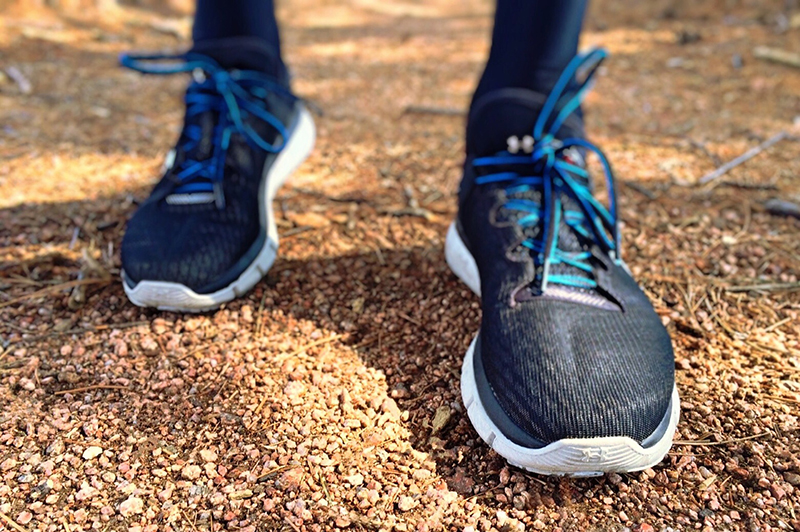
Trail runners
This type of hiking footwear is a result of an even deeper compromise between the level of protection and durability on one and comfort and weight on the other side. By definition, trail runners are lighter, more comfortable and more breathable but also less durable, less safe and less stable. Keep in mind, however, that things are never simple as they appear to be. For example, Salomon X Ultra 4 GTX are typical hiking shoes that weigh only 7 oz more than one of the lightest trail runners in the category i.e. Hoka One One Speed Goat 5.
If you feel this is too much consideration already remember that 50 years ago your only option would be to wear 3 lb hiking boots.
How is weight reduction achieved?
Weight is reduced in 2 ways:
- Material – trail runners tend to use lighter materials in uppers and soles. These include breathable meshes, synthetic fibers and EVA foam.
- Simplified design – manufacturers of trail runners often remove layers or features that they believe add more weight than value to a hiker.
Though it is preferable, be aware that the lowest weight does not necessarily indicate the best hiking shoes for you. There is more to consider.
Waterproofness
People often feel waterproofness is a must for any type of outdoor footwear. But here is a simple truth– you might actually not need waterproof hiking shoes.
Waterproofness is the ability of a hiking shoe to repel water. In the best hiking shoes, it is achieved mainly through the use of synthetic membranes such as Gore-Tex. This membrane does not allow the water from the outside to penetrate inside the hiking shoe, with aim keep your feet dry. But there is a catch. You cannot tell Gore-Tex when to let the water through and when not to. If the weather is warm, your feet will sweat and the same membrane will prevent the sweat to evaporate out. Your feet will get wet anyway.
The point is that, when looking for the best hiking shoes, you have to consider many variables such as the weather, the types of trails, the average length of your hike, etc. If your hikes are long, dry and warm, do not bother yourself with waterproofness. You will prefer breathability. Thankfully, manufacturers are quick to indulge hikers’ needs and as a consequence you get, for example, Hoka One One Speedgoat 5 in waterproof and non-waterproof versions.
Breathability
Consider breathability as the ability of a hiking shoe to ventilate. The best hiking shoes should enable efficient ventilation i.e. transfer of air through the shoe. This air transfer will keep your feet, socks included, dry and keep you safe from blisters and fungal infections, not to mention the overall sense of comfort.
The best hiking shoes, trail runners included, secure breathability through the use of breathable materials and design features that allow for better airflow and moisture management. These mainly include meshes in the upper part of the shoe, perforated sections and strategically placed vents or channels. Look and ask for these when choosing the best hiking shoes.
However, all these little gaps and vents leave the gates open for the water to go through together with the air. This is to say that breathability compromises waterproofness. And the relationship is reciprocal. More breathability means less waterproofness and vice versa.
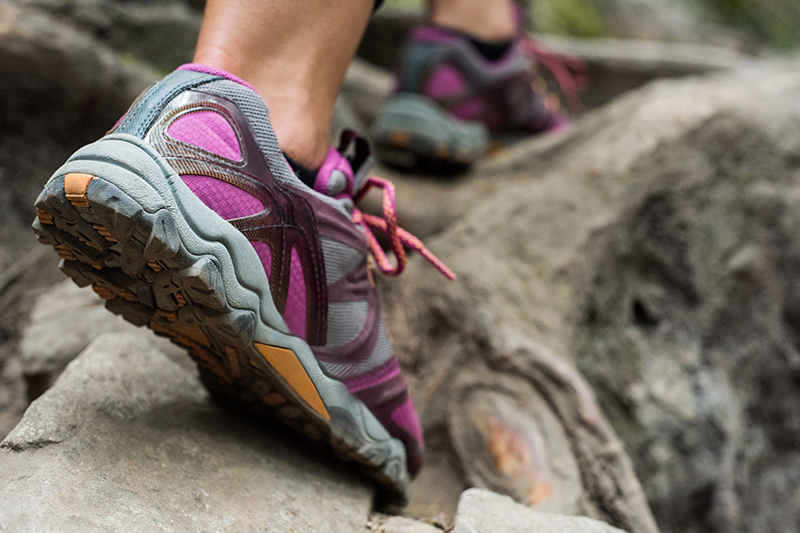
What about waterproof and non-waterproof versions of the same shoes?
Most often, the only difference between waterproof and non-waterproof hiking shoes or trail runners of the same type are Gore-Tex or eVent membranes. Manufacturers add these waterproof membranes in between layers in the upper part and make the shoe waterproof. Be aware that Gore-Tex or eVent are not absolutely waterproof. If they were, all hiking shoes having them would have zero breathability and that is not what hikers need. Yet, the membranes do provide a sufficient level of water protection as long as you are not stepping in deep mud or water for the majority of your hike.
Traction and stability
Unlike waterproofness and breathability, these two features do coexist. One even causes the other.
When you think of traction, think of the ways best hiking shoes prevent you from drifting on gravel or mud. Think of lugs and the outsoles. They manage the impact of your weight on the surface with the aim to prevent slippage. Scientifically speaking, traction means friction. Friction slows down and stops the motion of an object, which is you, in this case, sliding down a muddy slope. More friction means more traction. More traction means less slippage. Less slippage means more stability.
Lugs
Lugs are the bumps on the sole. Their shape, depth and position provide the friction we discussed above. Generally speaking, deeper lugs mean more stability. Nevertheless, the pattern of the lugs should not be disregarded. That is precisely why hiking shoes have so many of them. We will try to focus on the basics:
- Rounded shallow lugs – best for moderate hikes, not too demanding terrains
- Deeper V and Z-shaped lugs – great for backpacking and hiking on technical terrains
- Heel breaks – strong, deep patterns in the heel part, excellent for long day hikes and difficult routes
Outsoles
Outsoles are part of the soles that are in direct contact with the ground. In terms of traction and stability, the term outsole primarily refers to the material the outsole is made of. To put things simply, when looking for the best hiking shoes, look for rubber. Look for Vibram. That is unless you are considering buying Salomon X Ultra 4 from our list or any other Salomon hiking shoe. This is because Salomon has its own in-house compound named Contagrip which proved remarkably well. Most other manufacturers, however, use Vibram which is a brand name for high-performing rubber outsoles so good that many people do not even know it is a brand. They use it as a synonym for hiking shoe outsole in general.
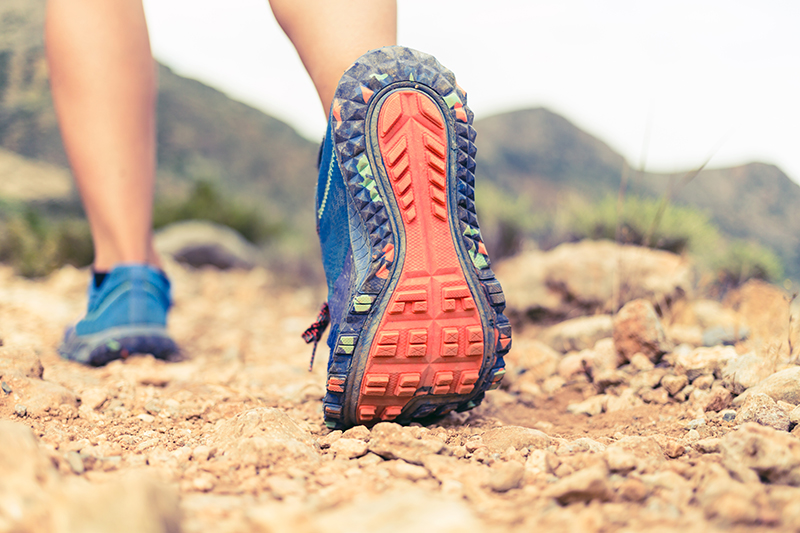
Built-in Stability
Apart from lugs and outsoles, the stability of a hiking shoe is also provided through its internal structure. This is where hiking shoes and train runners differ. Typical hiking shoes have more structure thanks to supports built in the shoes. They feel stiffer and stronger around the foot and provide more support. Trail runners, on the other hand, feel more comfortable but quite loose.
This “built-in stability” of hiking shoes makes them less or more flexible. The level of flexibility, again, depends on your personal preferences and hiking needs. Nonetheless, we can say that Salomon X Ultra 4 are stiffer and great for backpacking and several-day hikes, while Merrell Moab 3 are more flexible and great for daily routes and moderately difficult terrains.
Midsoles
Although their main purpose is to provide comfort, midsoles also impact the overall stability of hiking shoes.
The midsole is the part of your hiking shoe between the outsole and the uppers. Its main function is to provide cushioning and to absorb the shock and distribute the impact of each step throughout the foot. When this is done well, shoes feel stable.
Best hiking shoes, including trail runners belonging to this category, have EVA foam or TPU midsoles. Or a combination of the two.
- EVA – Ethylene-vinyl acetate foam, flexible, lightweight and durable synthetic material, relatively inexpensive and easy to mold into various shapes and densities.
Soft EVA foam gives maximum cushioning and shock absorption and is a great midsole choice for moderate hikes and not too rough terrain. Medium density EVA foam is more durable, provides a balance between cushioning and support and feels great for shorter light backpacking trips irrespective of terrain. Finally, there is the high density EVA foam which is the most durable and the toughest option, excellent for rough terrains and difficult hiking conditions. The rule of thumb is – high quality EVA midsoles mean more expensive hiking shoes.
- TPU – Thermoplastic polyurethane, a highly durable material, less flexible but more expensive than EVA. Best hiking shoes with TPU midsoles generally provide less cushioning but more stability. Also, the midsole does not flatten as EVA and the shoe tends to keep its original shape for a longer time. No wonder then that manufacturers combine the two to attain optimum frame and cushioning.
Uppers
Despite how different these might seem in various hiking shoes, uppers are not that complicated. If we exclude waterproof membranes explained in previous sections, best hiking shoes have uppers made of the following materials.
- Synthetic materials such as nylon and mash. These materials mean more breathability and comfort but lower waterproofness and durability.
- Leather, on the other hand, stands for durability, toughness and waterproofness but also increased weight and lower breathability.
As a consequence, synthetic uppers are great for warm and dry weather and leather for tougher conditions and terrains. Modern hiking shoes, such as Merrell Moab above, always combine the two to reach a balance between protection and comfort.

Lacing
Hiking footwear manufacturers call laces a system. The term may sound exaggerated, we agree, because it is a way you tighten up your shoes, not a nuclear power plant. Yet, the impact of these two strings, or a single one, on how comfortable hiking shoes are in total is considerable.
Some hiking shoes have standard laces with hooks or eyelets. Others, such as Salomon X Ultra 4 above, have single-pull lacing. Irrespective of what is modern, or looks good, never buy hiking shoes unless you can lace them fast and tight. Also, learn the difference between a too tight lacing and too stiff shoes. The importance of proper lacing is clearly reflected in the fact that these two are often mistaken for one another. So, take your time, lace up, make a few steps, readjust, and walk again. Keep in mind that the best hiking shoes will be sufficiently stiff to make you feel safe, but flexible enough to make you feel free. Lacing is something you should just do and not think of again until your hike is over.
Toe cap
Always look for a toe cap. It is a piece of rubber on top of your shoe that protects your toes. You might not consider this feature particularly important but then again please remember how it feels when you hit a piece of furniture with your toe. It is 3 seconds of hell. Now imagine how it would feel if you were to accidentally hit a rock with an unprotected toe and still have miles to go before the end of your hike. Keep that image in your mind for 3 seconds. To sum up, we will repeat one more time – always look for a toe cap.


